Garmin Forerunner 255 vs. Coros Pace 2: Which should you buy?
Both watches give runners all the data they need. The question is whether or not to upgrade to the Forerunner for extra perks.
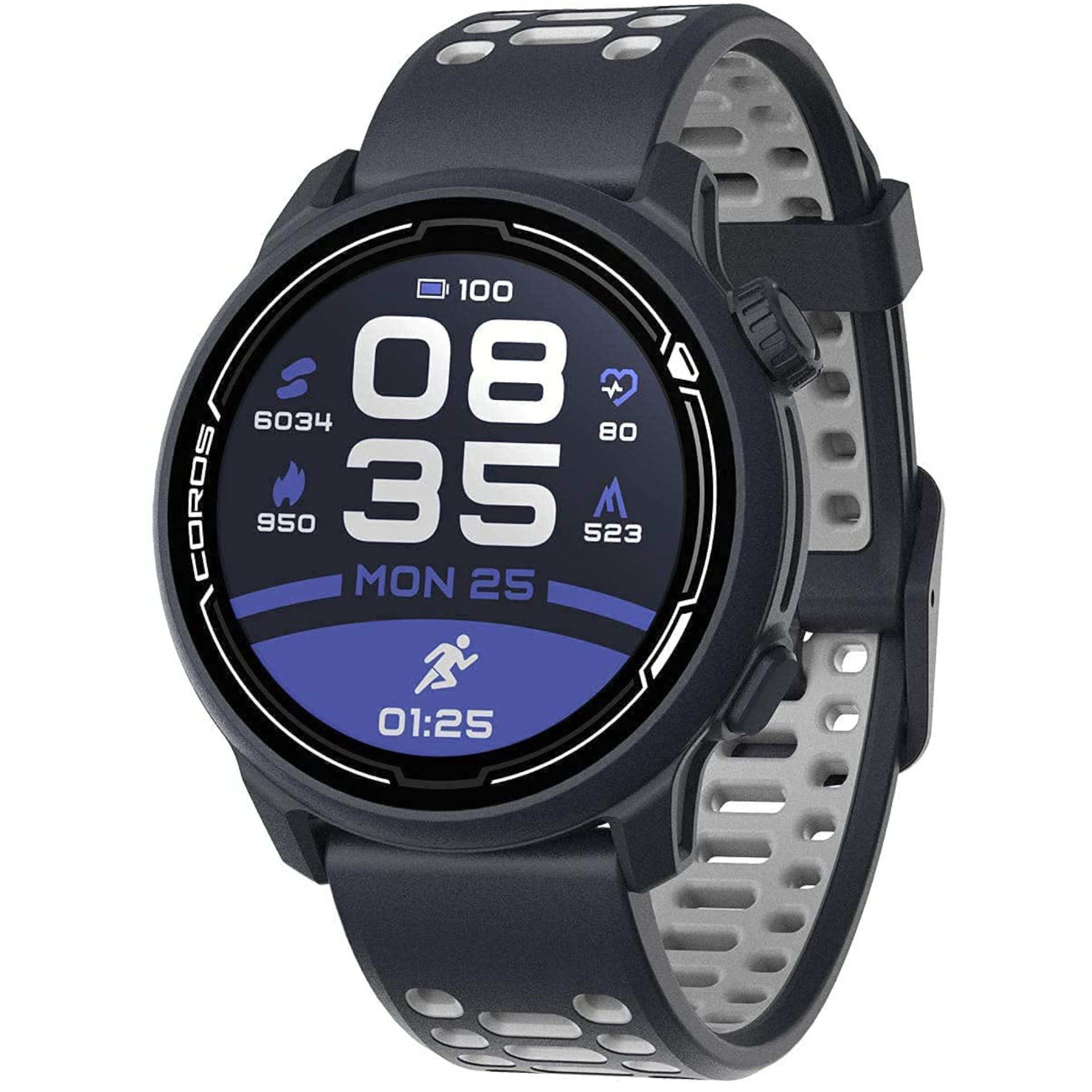
The affordable essentials
The Coros Pace 2 is lightweight, durable, easy to navigate through menus, and incredibly long-lasting in terms of battery life. Its EvoLab and Training Hub tools will give you all the running data and encouragement that you need to improve your splits. Outside of running, the Pace 2 doesn't have many feature perks.
For
- 30 GPS hours of battery life
- One-ounce design with rotating dial
- Thorough EvoLab data
- Downloadable workout data
- Very affordable
Against
- No Pulse Ox or NFC
- Slightly smaller display
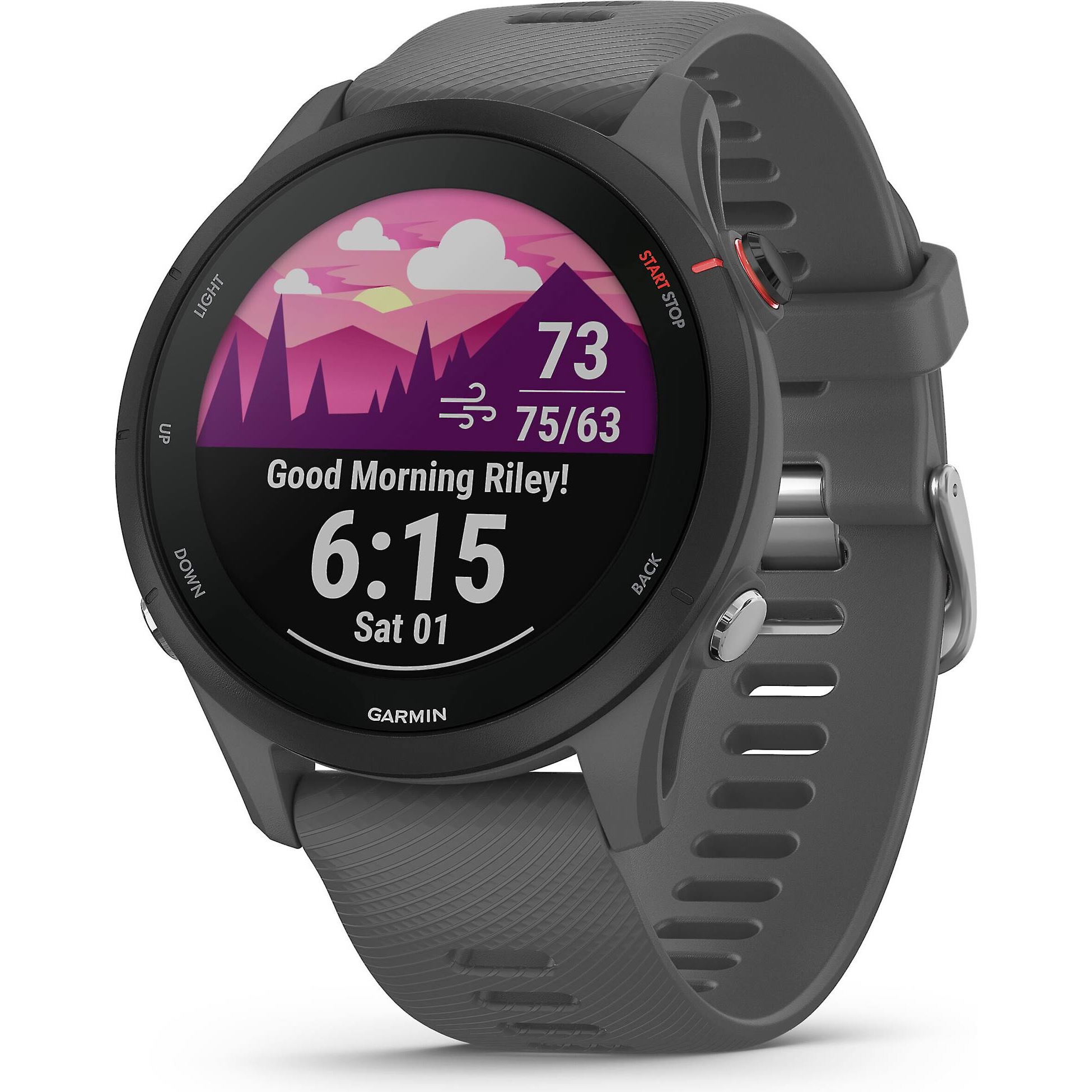
Everything but the kitchen sink
The Garmin Forerunner 255 is a watch that tracks every bit of data you could ever need, from sleep recharge to stress, race readiness to recovery time. It has the most accurate GPS and HRM data of any running brand today, along with reliable battery life. It is heavier and pricier than the Pace 2, however.
For
- 30 GPS hours of battery life
- A horde of fitness widgets and data
- Two size options
- Very accurate GPS/HRM data
- NFC, SpO2, and music storage
Against
- Heavier design
- More costly, especially with Music upgrade
On the hunt for a running watch that'll help you improve your PRs or just jump-start your cardio training? The new Garmin Forerunner 255 is one of the best well-rounded fitness devices of the year for features and battery life, but its price is on the higher side. The Coros Pace 2 is perhaps our favorite affordable running watch, but there are some compromises that go with the lower price. We're ready to break down which watch is a better fit for your fitness routine.
Garmin Forerunner 255 vs. Coros Pace 2: Weight, look, and feel
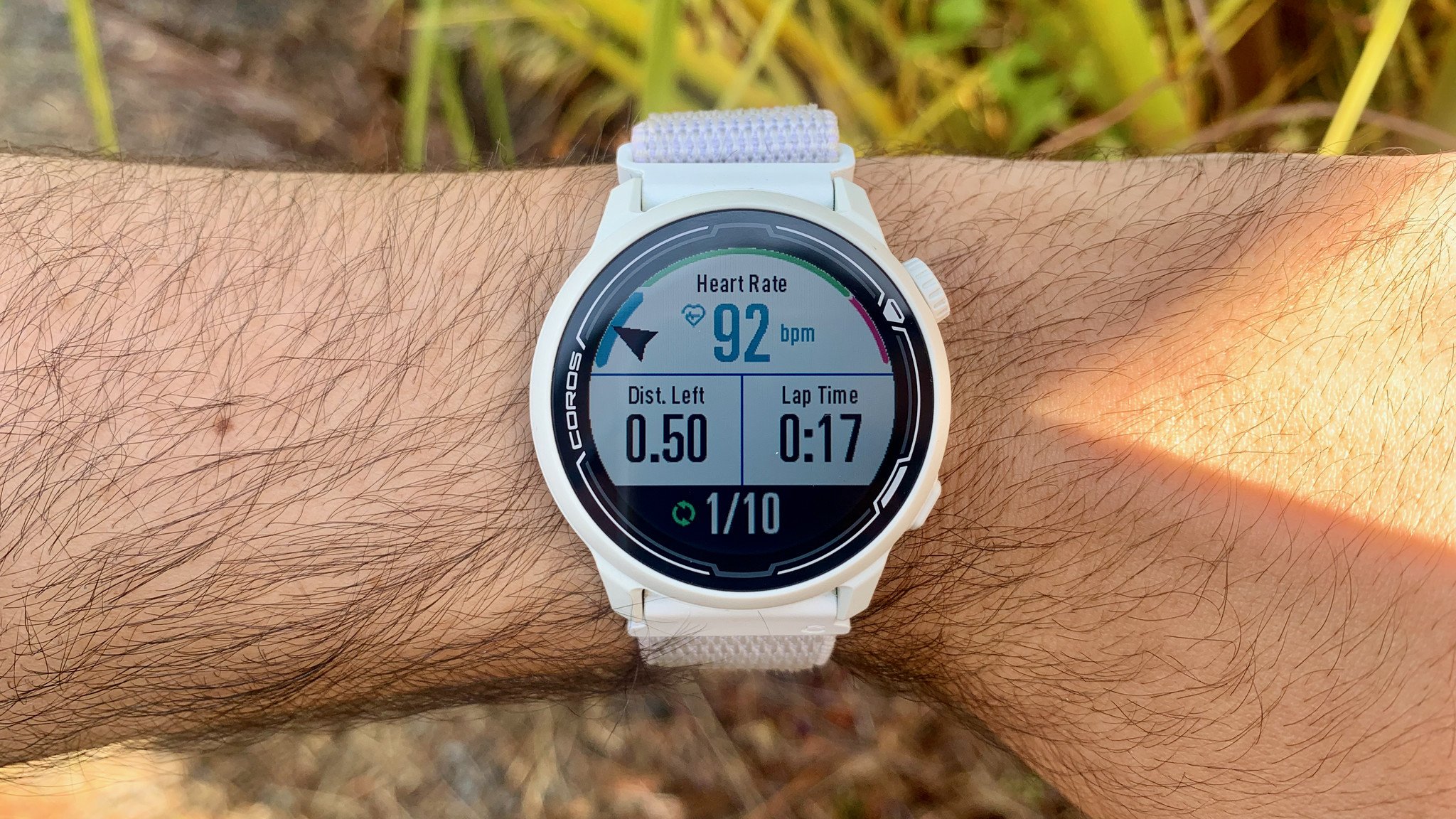
In my Coros Pace 2 review, I praised the watch for its one-ounce weight, putting it on par with fitness trackers in that it barely weighs down your wrist. Of course, to hit that weight you must buy the nylon strap, which tends to get a bit itchy and sweat-soaked; you may want to add an extra 0.2 ounces for the silicone strap instead.
Garmin watches, on the other hand, tend to be slightly heavier and bulkier. The Forerunner 255 comes in two sizes, with one — the Forerunner 255S — designed for smaller wrists. But even that model, which has a smaller display than the Coros Pace 2, is 0.7 mm thicker and 4 grams heavier than the silicone Pace 2. Use nylon and compare to the full-size 255, and the Pace 2 is a full 20 grams lighter, a significant difference.
Both running watches use an LCD display, though only the Forerunner 255 uses Memory-in-Pixel (MIP) LCD for battery life improvements. But as we'll discuss below, this doesn't end up hurting the Pace 2 in its battery capacity.
In terms of actual visibility, they offer the same experience: reasonable brightness and color that's fully visible in direct sunlight, with enough display space to make the text easy to read unless you're near-sighted. Though the Pace 2 and 255S will squeeze their text more thanks to the smaller screen space, and only the Forerunner models have a dedicated backlight button.
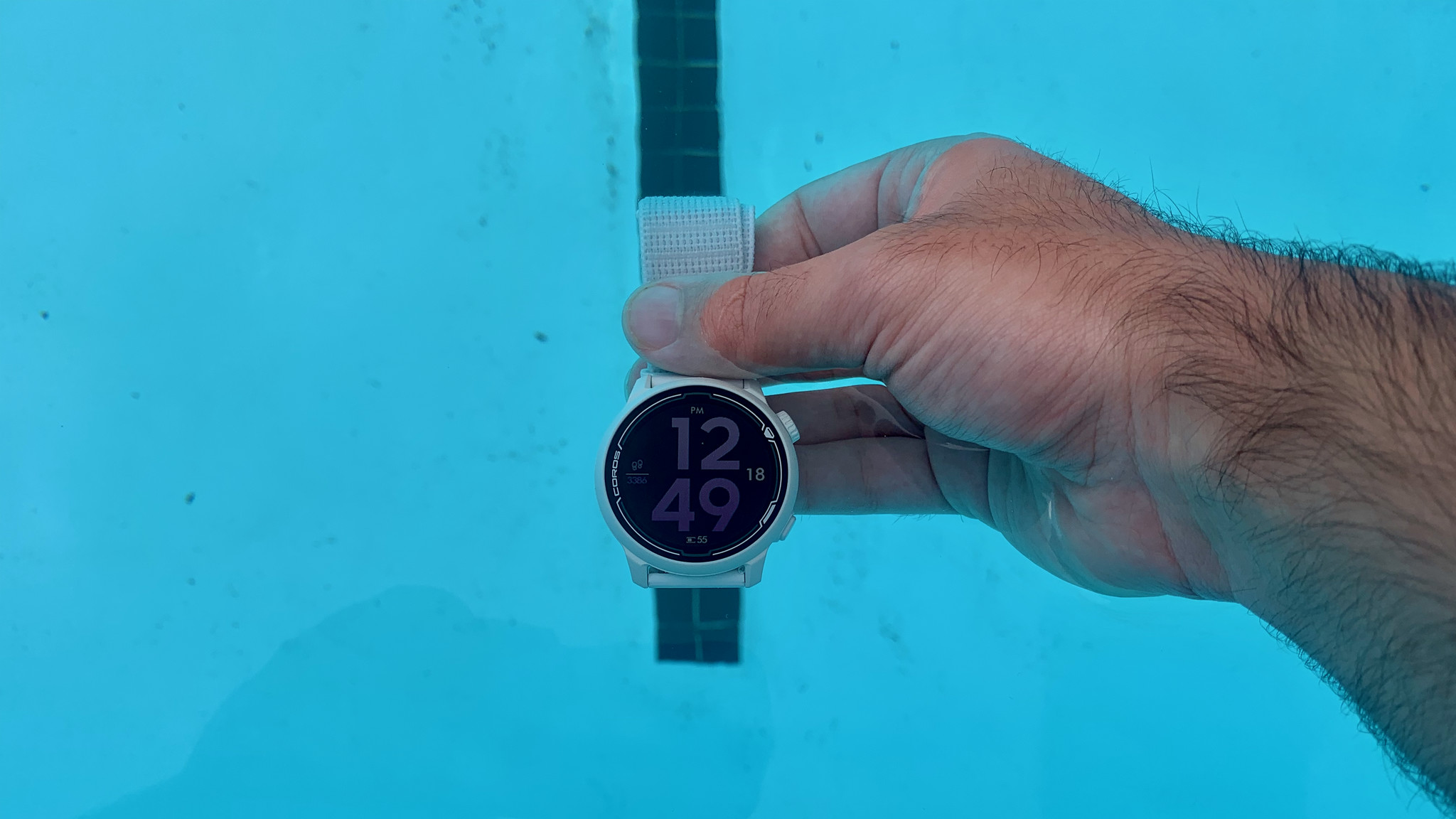
Fully reliant on fiber-reinforced polymer, these watches won't win any style awards with their plastic look, but it will at least make your watch more durable during falls, and less likely to accentuate scratches.
On that note, both watches have 5 ATM water resistance for swimming but don't have any military-grade fall protection like the Garmin Instinct 2. While the newer Forerunner 255 has Gorilla Glass 3, Coros only says the Pace 2 has "Corning Glass" without specifying a model; it likely won't give you the same protection.
As for UI navigation on these watches, Coros keeps things straightforward with a rotating dial and a single back button, while Garmin Forerunner 255 (like most Garmin watches) uses five buttons: select, back, scroll up/down, and backlight, while holding them down offers alternate uses. The Pace 2 primarily has you scrolling through options, then tapping the dial to select it; as I said in my review, "menuing is a breeze" with it.
Garmin Forerunner 255 vs. Coros Pace 2: Specs, sensors, and battery
| Category | Garmin Forerunner 255 | Coros Pace 2 |
|---|---|---|
| Display | 1.3-inch Memory-in-Pixel non-touch (260x260); 1.1-inch (208x208) for 255S model | 1.2-inch always-on LCD non-touch (240x240) |
| Materials | Fiber-reinforced polymer | Fiber-reinforced polymer |
| Bands | 22mm quick-release; 18mm (255S) | 20mm quick-release |
| Dimensions | 45.6 x 45.6 x 12.9mm; 41 x 41 x 12.4mm (255S) | 42 x 42 x 11.7mm |
| Weight | 49 grams / 1.73 ounces (255); 39 grams / 1.38 ounces (255S) | 29 grams / 1.02 ounces (Nylon); 35 grams / 1.23 ounces (Silicone) |
| Protection | 5ATM; Gorilla Glass 3 | 5ATM; Corning Glass |
| Tracking | GPS, GALILEO, GLONASS, All-Systems Multi-Band GPS | GPS, GALILEO, GLONASS |
| Sensors | HRM, altimeter, compass, gyroscope, accelerometer, thermometer, pulse ox | HRM, altimeter, compass, gyroscope, accelerometer, thermometer |
| Connectivity | Bluetooth, ANT+ | Bluetooth, ANT+ |
| Battery estimates | 14 days smartwatch mode; 30 hours GPS mode | 20 days smartwatch mode; 30 hours GPS mode |
| Music storage | Up to 500 songs; costs extra | 🚫 |
| Tap-to-pay | ✔️ | 🚫 |
Both the Forerunner 255 and Coros Pace 2 have the same pixels-per-inch (283) with the 255S barely falling behind (280). They're visually quite similar, with no touch capabilities between them, and the MIP battery boost doesn't necessarily give Garmin a huge edge.
With 20 days of standard battery life and 30 GPS-tracked hours, Coros beats the Forerunner 255 by six days and matches its own 30-hour estimate — despite its smaller case size. For comparison, the Forerunner 255S downgrades to 12 days and 26 GPS hours thanks to its size deficiency. Evidently, Coros made its watch slightly more efficient, as well as lighter.
Both watches largely offer the same sensors and connectivity options for third-party accessories through Bluetooth and ANT+. Where Garmin has a step up is in its Pulse Ox sensor, which gives the Forerunner 255 an edge for measuring altitude acclimation and how well you're breathing and recharging at night.
The Forerunner 255's Elevate v4 heart rate monitor also has the capacity to measure heart rate variability, another tool for measuring your body's stress and sleep effectiveness. Basically, if you want to wear your watch 24/7, a tool like Garmin Body Battery gives the Forerunner 255 an edge.
While you're working out, both Coros and Garmin offer the same tracking satellites, but Garmin once again has the edge here thanks to All-Systems GNSS, and Multi-Band GPS. All-Systems turns on GPS, GALILEO, and GLONASS tracking all at once, and compares results to give you the most accurate location data possible. Multi-Band GPS uses the newer L5 satellite frequencies and traditional L1 satellites simultaneously, so you're less likely to lose your location even for a second.
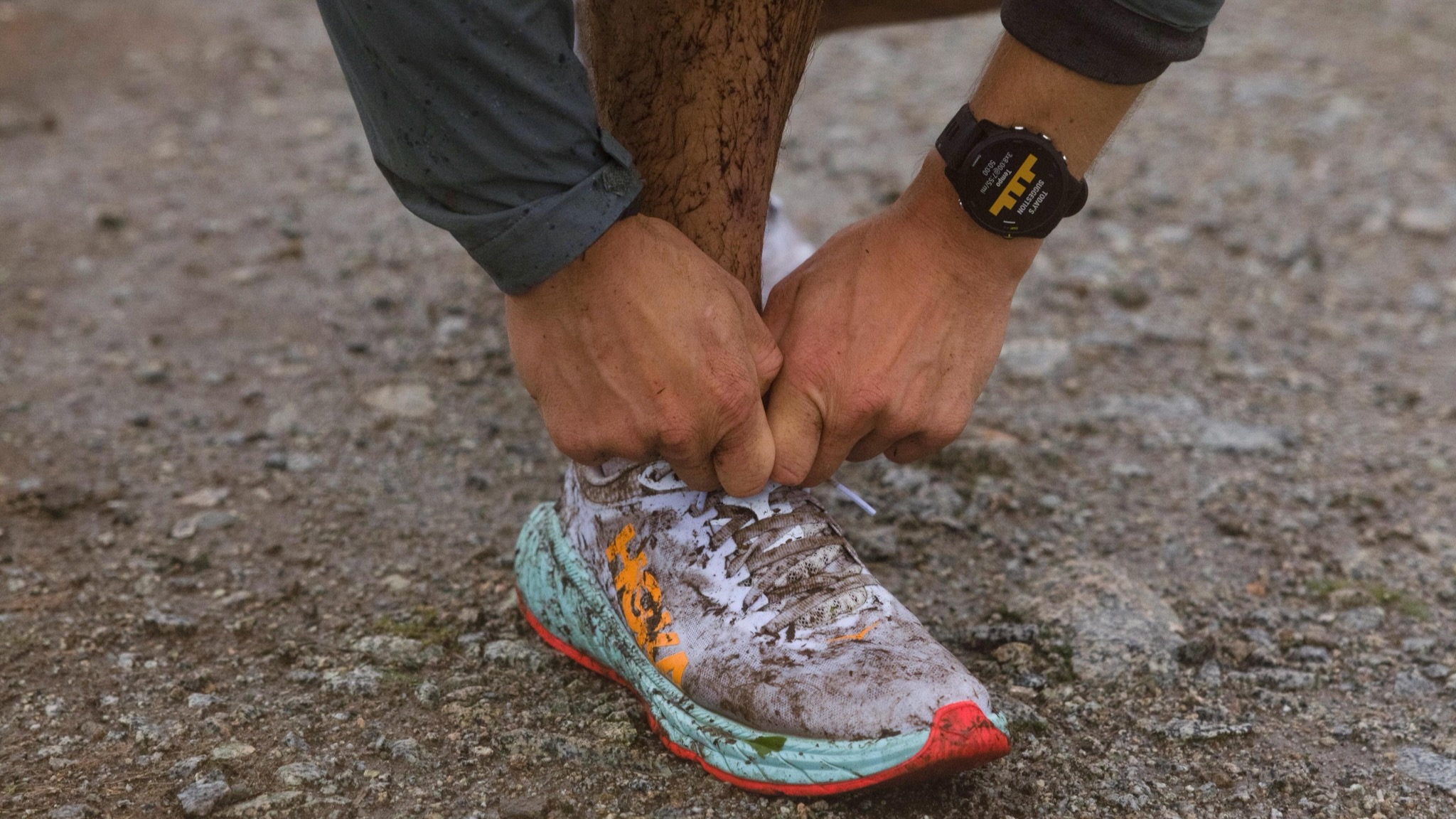
We found Coros Pace 2 tracking reasonably accurate in our testing, but Garmin gives serious athletes a next-gen option. Of course, turning All-Systems and/or Multi-Band on cuts your battery life in half, so you may or may not want to use them.
In terms of "smart" features you'd find on a typical smartwatch, Garmin Forerunner 255 offers a couple, but not many. Specifically, you get NFC tap-to-pay and music storage for 500 songs from Spotify, Amazon Music, or Deezer. If you use another streaming service, you're out of luck; and it costs an extra $50 to add storage, which brings the Forerunner 255 Music price to double that of the Pace 2.
Otherwise, neither watch has a touchscreen, a mic, or speaker for calls or voice assistants, on-display exercises, and so on. They'll show notifications from your phone, but lack the tools you'll find on an Android smartwatch or an Apple Watch. Most runners will be fine with that in exchange for the reliable battery life, but it's worth noting regardless.
Garmin Forerunner 255 vs. Coros Pace 2: App and features
Both the Garmin Connect and Coros apps offer free running metrics and health data for both iOS and Android — a major perk compared to other brands like Fitbit and Amazon that charge a monthly fee for data.
Diving into the app differences between these two would take its own separate article, so I'll focus instead on the highlights of what each offers, either on the watch itself or in the app.
Starting with Garmin, the Forerunner series goes nuts with features, tracking your performance condition, training effect, and recommended daily workouts and recovery time post-run. The aforementioned sensors measure your stress and sleep overnight, then you receive a Morning Report that summarizes your health data and how you should work out that day. Plus, there's a Race Widget that tells you how many days until it starts and how to train for it specifically.
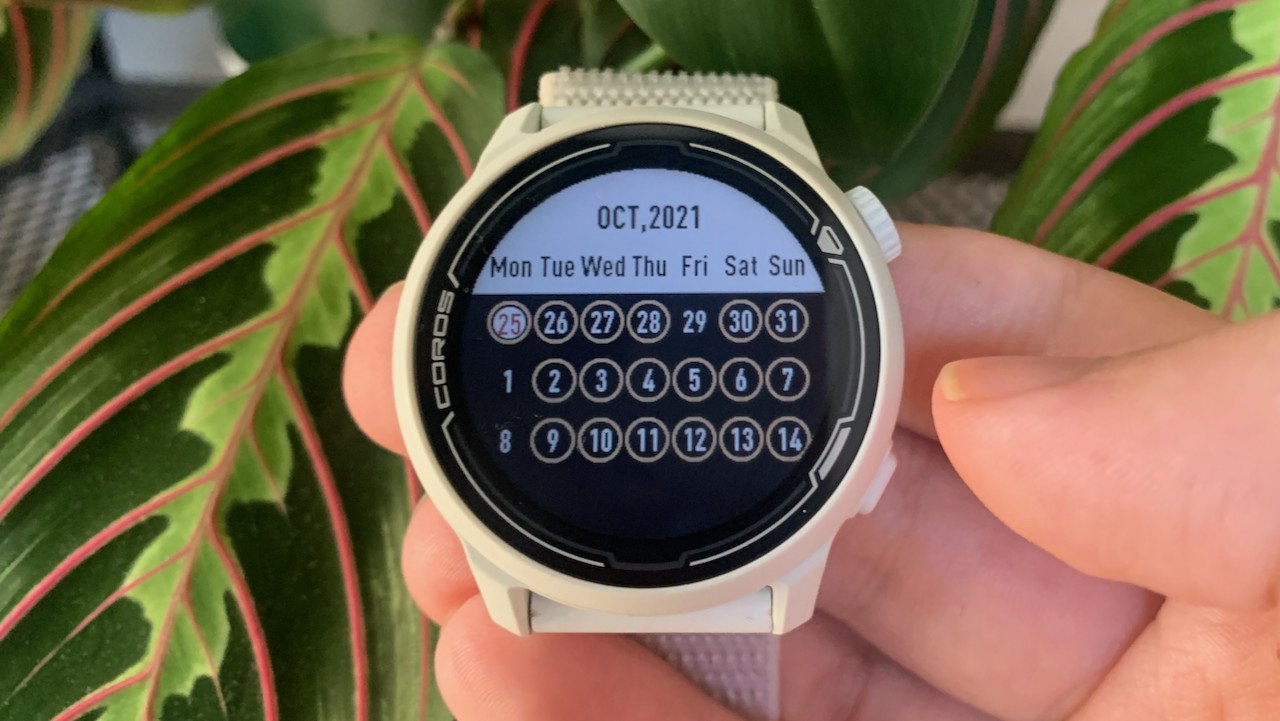
As for Coros, it has a Training Hub where you can analyze your performance and directly compare it against virtual teammates, an excellent option for running club members. Coros EvoLab calculates your Base Fitness, Training Load/ Effect, Fatigue score (very similar to Body Battery), running performance, and a race predictor, among other features. You can also download workouts and schedules and check them on your watch.
Garmin Forerunner 255 vs. Coros Pace 2: Which should you buy?
If you already use Coros or Garmin hardware, sticking to the same ecosystem saves you the month or so it takes for either brand to build up a reliable profile of your fitness level. But if you're unattached or willing to switch, choosing between these two is surprisingly tricky.
We're big fans of the Coros Pace 2, mainly because you get all the core running data you could want in an affordable, featherweight package. Compared to the Garmin Forerunner 255 with its newer hardware, you'll miss out on tools like SpO2 and HRV that give its rival a more holistic look at your health. And it can't match the multi-satellite accuracy of Garmin's new GPS tech. But are these perks worth an extra $150-$200 and a heavier design? Only you can decide that.
Whichever you choose, both the Forerunner 255 and Pace 2 number among our favorite running watches. But of these, the Pace 2 definitely has the best value per dollar spent for thrifty runners; the question becomes whether you can spare the extra cost for the Forerunner 255.

The affordable essentials
This lightweight runner's watch will track your fitness, training effort, and fatigue before, during, and after runs. All in a lightweight package you'll barely notice while running. What else do you need?

Everything but the kitchen sink
Some things you might need include Garmin Pay, SpO2 tracking, music storage, useful widgets packaging all the data you need, multi-satellite and multi-band GPS, improved sleep tracking data, and other Garmin Forerunner perks in exchange for a higher price tag.
Be an expert in 5 minutes
Get the latest news from Android Central, your trusted companion in the world of Android

Michael is Android Central's resident expert on wearables and fitness. Before joining Android Central, he freelanced for years at Techradar, Wareable, Windows Central, and Digital Trends. Channeling his love of running, he established himself as an expert on fitness watches, testing and reviewing models from Garmin, Fitbit, Samsung, Apple, COROS, Polar, Amazfit, Suunto, and more.
